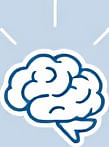Dance as a Tool for Cognitive Load Offloading and Mental Well-Being
 by Max Miller
by Max Miller
Discover how engaging in dance can help alleviate cognitive overload, offering simple strategies for students and professionals to improve focus and reduce stress in daily routines. This approach promotes better mental health through enjoyable physical activity.

In our busy lives, managing mental demands can feel overwhelming. Cognitive load offloading involves strategies to ease the burden on our minds, allowing us to function more effectively. One effective method is through physical activities like dance, which can clear mental clutter and foster relaxation.
Why Dance Helps with Cognitive Load
Dance requires focus on movement and rhythm, yet it also provides a break from everyday worries. By shifting attention to the body, individuals can temporarily set aside intrusive thoughts. This process aids in reducing overall mental fatigue, making it easier to tackle tasks later.
For students, incorporating dance into study breaks can refresh the mind. Dance serves as a quick reset, helping to maintain concentration during long sessions of learning. Professionals might find that a short dance session at work re-energizes them, improving productivity without needing complex tools.
The Connection to Mental Health
Engaging in dance releases endorphins, natural chemicals that uplift mood and decrease anxiety. This biological response plays a key role in offloading cognitive load by promoting emotional balance. Regular participation can lead to sustained mental clarity, benefiting anyone seeking better daily performance.
In group settings, dance builds social connections, which further supports mental health. Sharing a dance experience creates a sense of community, alleviating feelings of isolation that often contribute to overload.
Practical Tips for Incorporating Dance
To start offloading cognitive load through dance, begin with simple steps that fit into your routine:
- Choose enjoyable music: Select tracks that make you want to move, ensuring the activity feels fun rather than forced.
- Set aside short sessions: Aim for 10-15 minutes a day, such as during lunch breaks or after work, to keep it manageable.
- Try different styles: Experiment with options like salsa or freestyle to keep things varied and engaging.
For students, use dance as a reward after completing assignments. This technique reinforces positive habits and reduces the buildup of stress. Professionals can integrate it into meetings or team activities to boost morale and enhance focus.
Tracking progress is important; note how you feel before and after dancing to see improvements in mental state. Over time, this practice can become a reliable way to handle daily pressures.
Making It a Habit
Consistency is key to reaping long-term benefits. Start by identifying times when cognitive load peaks, such as before exams or deadlines, and use dance as an immediate intervention. Cognitive load offloading through this method not only addresses immediate needs but also builds resilience against future overloads.
Remember, the goal is to find joy in the process. By making dance a regular part of life, you create a sustainable path to better mental health and enhanced productivity.
In conclusion, embracing dance offers a straightforward yet powerful way to manage mental demands. Whether you're a student juggling classes or a professional handling multiple projects, these tips can lead to noticeable improvements in well-being.
